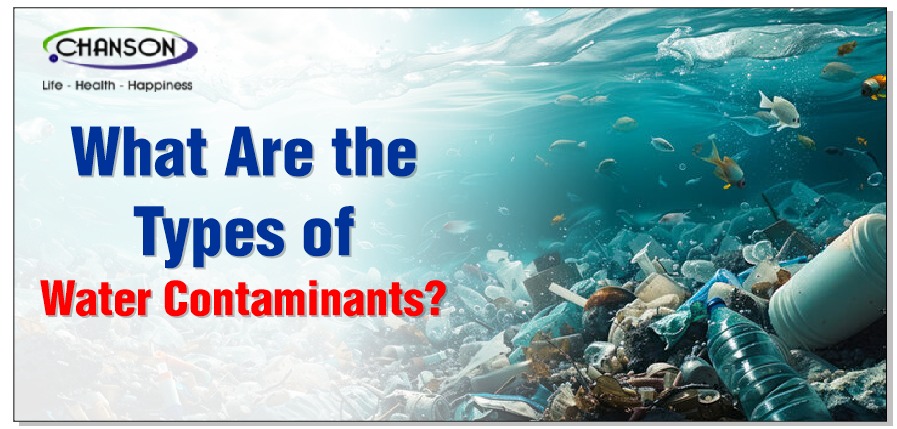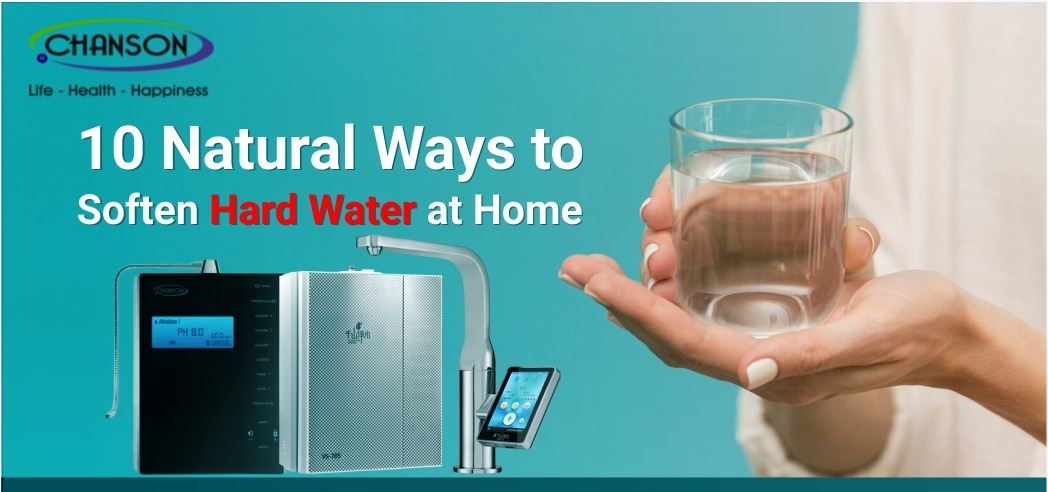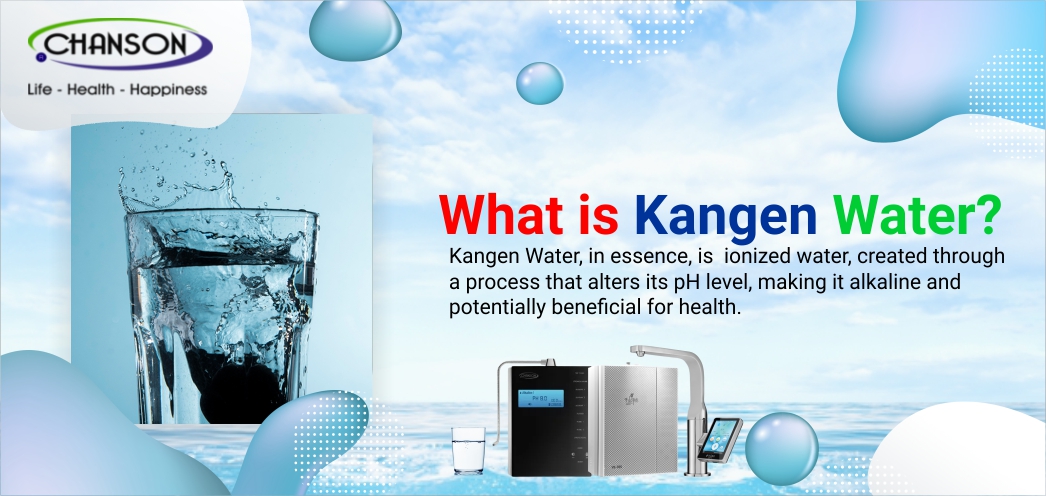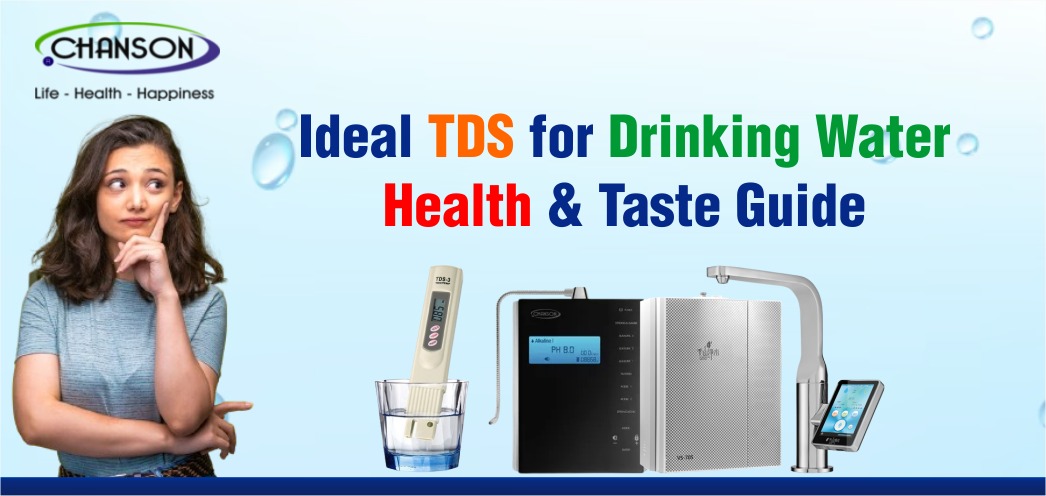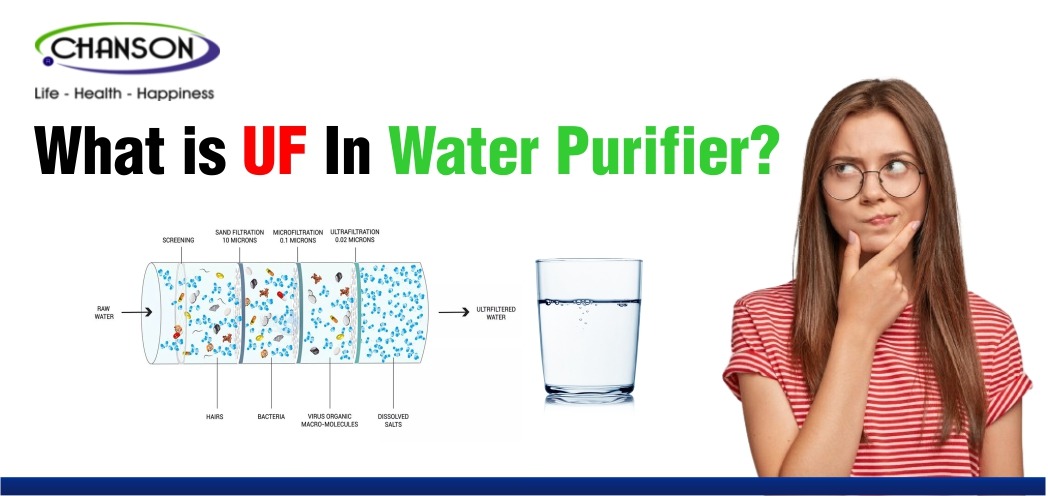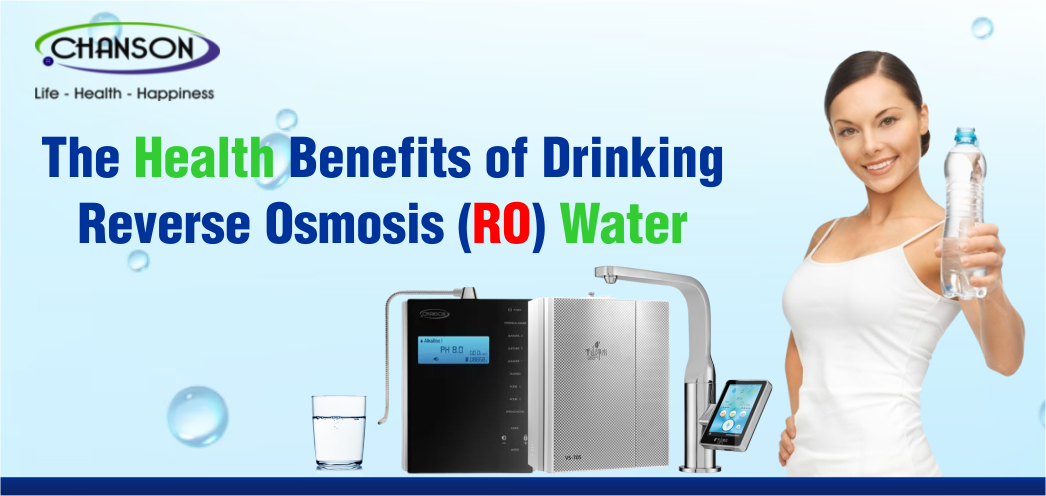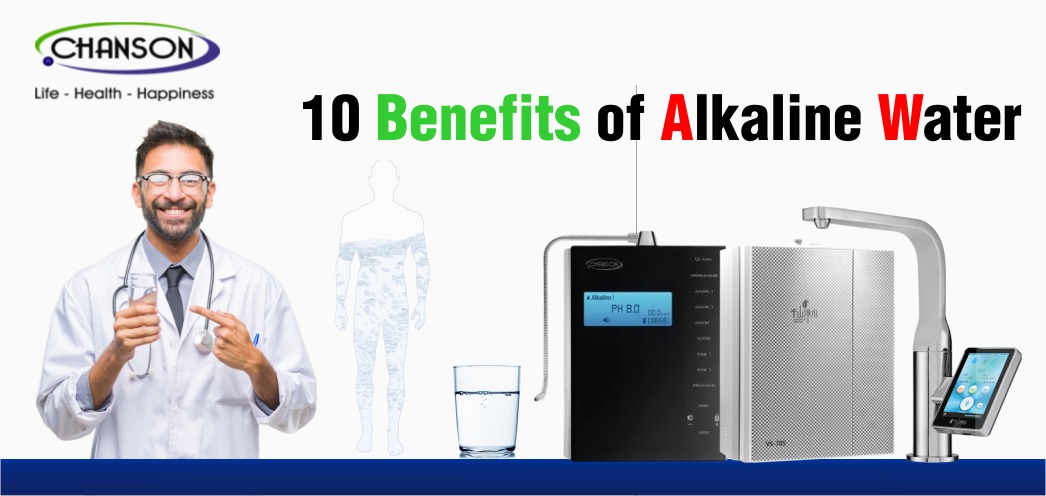Discover the ultimate guide to choosing the right water softener size for your needs. It's not just about capacity; it's about efficiency and impact!
What Size Water Softener Do I Need?
Choosing the right size water softener is crucial for ensuring optimal water quality and efficiency in your home. Selecting a unit that's too small can lead to inadequate softening, while an oversized unit can result in unnecessary expenses and maintenance issues. This guide will help you navigate the process of determining the appropriate size water softener for your household.
Water softeners remove minerals like calcium and magnesium from your water supply, preventing scale buildup in your plumbing and appliances. The benefits of using a water softener include extended appliance life, improved soap efficiency, and softer skin and hair.
Learn about various water contaminants, including biological, chemical, and heavy metals, their sources, and health impacts, and the importance of clean water for safety.
What Are the Types of Water Contaminants?
Water contamination is a growing concern worldwide, posing significant risks to health and safety. Understanding the various types of water contaminants is crucial in safeguarding our health and ensuring the purity of our water sources. This blog post delves into the different types of water contaminants, their sources, and their impacts on health.
1. Biological Contaminants
Definition and Examples
Biological contaminants are living organisms that can cause diseases. They include bacteria, viruses, and parasites.
● Bacteria: E. coli, Legionella
● Viruses: Norovirus, Hepatitis A
● Parasites: Giardia, Cryptosporidium
Sources
Biological contaminants typically enter water sources through:
● Sewage overflows
● Agricultural runoff
● Wildlife
Health Impacts
These contaminants can lead to various health issues, such as:
● Gastrointestinal illnesses
● Infections
2. Chemical Contaminants
Definition and Examples
Chemical contaminants include substances used in agriculture and industry, as well as household chemicals.
● Pesticides: Atrazine, DDT
● Herbicides: Glyphosate
● Industrial chemicals: PCBs, Dioxins
Sources
Chemical contaminants often originate from:
● Agricultural runoff
● Industrial discharges
● Household waste
Health Impacts
Exposure to chemical contaminants can result in:
● Hormonal disruptions
● Cancer risks
● Neurological disorders
3. Heavy Metals
Definition and Examples
Heavy metals are metallic elements that can be toxic even at low concentrations.
● Lead
● Mercury
● Arsenic
Sources
Heavy metals enter the water through:
● Corrosion of plumbing systems
● Industrial processes
● Natural deposits
Health Impacts
Health issues associated with heavy metals include:
● Neurological damage
● Kidney disease
● Developmental issues in children
4. Organic Contaminants
Definition and Examples
Organic contaminants are carbon-based chemicals, often from industrial or household sources.
● Volatile Organic Compounds (VOCs): Benzene, Toluene
● Polycyclic Aromatic Hydrocarbons (PAHs)
Sources
These contaminants typically come from:
● Industrial solvents
● Fuel spills
● Consumer products
Health Impacts
Exposure can lead to:
● Respiratory issues
● Liver damage
● Cancer
5. Radiological Contaminants
Definition and Examples
Radiological contaminants are radioactive substances.
● Uranium
● Radium
● Radon
Sources
They originate from:
● Natural radioactive decay
● Mining activities
Health Impacts
Health risks include:
● Increased cancer risk
● Bone damage
6. Physical Contaminants
Definition and Examples
Physical contaminants are particles that affect the physical properties of water.
● Sediments
● Microplastics
● Microfibers
Sources
These contaminants are commonly from:
● Erosion
● Industrial discharge
● Laundry effluent
Health Impacts
Physical contaminants can cause:
● Clogging of water systems
● Potential physical harm
7. Emerging Contaminants
Definition and Examples
Emerging contaminants are newly recognized or recently detected in water.
● Pharmaceuticals: Antibiotics, Hormones
● Personal Care Products: Sunscreens, Fragrances
Sources
These contaminants often come from:
● Improper disposal of medications
● Everyday use of personal care products
Health Impacts
Potential health effects include:
● Antimicrobial resistance
● Endocrine disruption
Understanding the different types of water contaminants is essential for protecting our health and ensuring the safety of our water supplies. Regular water testing and purification can help mitigate the risks posed by these contaminants. Be proactive in ensuring your water quality to safeguard your health and well-being.
At Chanson Water, we are committed to providing you with the highest quality water solutions to keep you and your family safe. Our range of advanced water ionizers not only purify your water but also enhances its health benefits by balancing pH levels and removing harmful contaminants.
Explore our selection of water ionizers today and take the first step towards cleaner, healthier water. Visit our website or contact us to learn more about how Chanson Water can help you ensure the purity of your drinking water. Don't wait—protect your health and invest in your well-being with Chanson Water's innovative water ionizers.
Discover 10 actionable tips to slow down aging with alkaline water. Learn practical ways to integrate it into your routine for youthful, vibrant health.
A water softener removes sulfur smell by replacing minerals like calcium and magnesium with sodium through ion exchange, eliminating the odor.
Hard water is a common issue in many households, characterized by high mineral content, particularly calcium and magnesium. These minerals can cause a variety of problems, from dry skin and dull hair to clogged pipes and inefficient appliances. Softening hard water is crucial for maintaining the health of your skin and hair, as well as extending the lifespan of your household appliances. In this blog post, we will explore ten natural methods to soften hard water at home, ensuring a healthier and more efficient living environment.
1. Boiling
Boiling is one of the simplest ways to soften hard water. When water is boiled, the heat causes calcium and magnesium ions to precipitate out, reducing the hardness.
● How to Boil Water for Softening: Simply bring a pot of water to a boil and let it cool. The minerals will settle at the bottom, and you can pour the softened water into another container, leaving the sediment behind.
● Practical Tips: Boil water in batches and store it in clean, covered containers for daily use.
2. Using Baking Soda
Baking soda is an effective and affordable way to soften water due to its alkaline properties, which help to neutralize the minerals.
● Step-by-Step Guide: Add one teaspoon of baking soda to a gallon of water, stir well, and let it sit for a few hours before use.
● Benefits and Precautions: Baking soda not only softens water but also enhances its alkalinity. However, overuse can lead to excessive alkalinity, so it's important to use it sparingly.
3. Vinegar Treatment
Vinegar is a natural acid that can break down minerals found in hard water, making it softer.
● Instructions: Add one cup of vinegar to a gallon of hard water, mix thoroughly, and let it sit for a few hours.
● Suggested Types and Quantities: White vinegar is commonly used, but apple cider vinegar can also be effective. Use one cup of vinegar per gallon of water for optimal results.
4. Lemon Juice
Lemon juice, with its natural acidity, is another effective method to soften water.
● Process: Squeeze the juice of one lemon into a gallon of water, mix well, and allow it to stand for a few hours.
● Additional Benefits: Lemon juice not only softens water but also adds a fresh scent and slight flavor, making it pleasant for drinking.
5. Using a Carbon Filter
Carbon filters are effective at removing chlorine and organic compounds, which can contribute to water hardness.
● Installation and Maintenance: Attach a carbon filter to your faucet or use a pitcher with a built-in filter. Replace the filter cartridges as recommended by the manufacturer.
● Benefits: Carbon filters improve water taste and odor while reducing hardness.
6. Adding Epsom Salt
Epsom salt can help in softening water by binding with the minerals.
● Guide: Dissolve one tablespoon of Epsom salt in a gallon of water and let it sit for a few hours.
● Safety Tips: While Epsom salt is generally safe, it's important not to overuse it, as excessive magnesium can cause health issues.
7. Installing a Shower Head Filter
Shower head filters are designed to remove minerals from the water, providing a softer shower experience.
● Types and Effectiveness: Look for filters that are specifically designed to reduce hardness. Many models also remove chlorine and other impurities.
● Installation and Maintenance: These filters are easy to install and usually require cartridge replacements every few months.
8. Using a Magnetic Water Softener
Magnetic water softeners work by altering the electromagnetic properties of minerals, preventing them from sticking to surfaces.
● Installation and Use: Attach the magnetic device to your water pipes as per the manufacturer's instructions.
● Pros and Cons: While easy to install and maintain, the effectiveness of magnetic softeners can vary based on water composition and flow rate.
9. Employing a Water Softening Pillow
Water-softening pillows are small, portable devices that can be placed in water to reduce hardness.
● Instructions: Place the pillow in a container of water and let it sit for the recommended time, typically a few hours.
● Advantages and Limitations: These pillows are convenient and reusable but may not be suitable for large volumes of water.
10. Using Aloe Vera
Aloe vera has natural properties that can help in softening water.
● Preparation and Use: Cut an aloe vera leaf, extract the gel, and add it to a gallon of water. Mix well and let it sit for a few hours.
● Additional Benefits: Aloe vera not only softens water but also has moisturizing properties that are beneficial for the skin.
Softening hard water naturally is both eco-friendly and cost-effective. By using these ten methods, you can improve the quality of your water, protect your appliances, and enjoy healthier skin and hair. Experiment with these techniques to find the ones that work best for you, and consider combining them for enhanced effectiveness. Regularly maintaining your household appliances and monitoring water quality will ensure the best results. Try these natural water-softening methods at home and experience the difference!
In recent years, the popularity of alkaline water has surged as more people seek out health and wellness trends. Among the various types of alkaline water, Kangen Water stands out as a prominent and frequently discussed option. This blog post aims to explore what Kangen Water is, its benefits, and its uses, providing a comprehensive understanding for those curious about its potential health advantages.
- Hydration and Absorption: The smaller water clusters in Kangen Water are believed to enhance hydration and improve absorption at the cellular level.
- Antioxidant Properties: Kangen Water is rich in antioxidants, which can help combat free radicals and reduce oxidative stress.
- Potential Health Benefits: Users report various health benefits, including improved digestion, enhanced detoxification, and increased energy levels. Compared to regular tap and bottled water, Kangen Water's unique properties may offer superior hydration and detoxification capabilities.
Common Uses of Kangen Water
Kangen Water is versatile and can be used in various aspects of daily life:
- Drinking and Hydration: It serves as a refreshing and hydrating beverage.
- Cooking and Food Preparation: Kangen Water can enhance the flavor and nutritional value of food
- Cleaning and Sanitizing: The acidic water produced by Kangen machines is effective for cleaning and sanitizing surfaces
- Skincare and Beauty Routines: The water's properties can benefit the skin, making it a popular choice for beauty routines.
Understanding pH and ORP Levels
To fully appreciate Kangen Water, it's essential to understand pH and ORP levels:
- pH Levels: The pH scale measures how acidic or alkaline a substance is. Kangen Water typically has a higher pH, making it alkaline, which is thought to balance the body's pH levels.
- ORP (Oxidation-Reduction Potential): ORP indicates the water's ability to act as an antioxidant. Kangen Water generally has a negative ORP, signifying its potential to reduce oxidation and combat free radicals.
Myths and Facts About Kangen Water
As with any popular health trend, Kangen Water is surrounded by myths and misconceptions. It's crucial to address these and rely on scientific research and expert opinions. While some claims may be exaggerated, many testimonials and user experiences highlight genuine benefits. Scientific studies provide additional support, though it's always advisable to approach such claims with a critical eye.
How to Get Kangen Water?
For those interested in trying Kangen Water, purchasing a Kangen Water machine is the primary option. These machines vary in price, and it's essential to choose one that fits your needs and budget. Maintenance involves regular cleaning and filter replacements to ensure optimal performance.
Additional Resources
For further information on Kangen Water and alkaline water, consider exploring the following resources:
- Scientific Studies and Articles: Look for research on the benefits and properties of alkaline water.
- Books and Experts: Seek out publications and opinions from experts in the field of health and wellness.
- Enagic's Official Website and User Communities: These platforms offer valuable insights, support, and user experiences.
Kangen Water presents an intriguing option for those looking to enhance their health and wellness routines. By understanding its origins, production process, benefits, and uses, you can make an informed decision about incorporating Kangen Water into your daily life.
Interested in the Health Benefits of Alkaline Water?
Experience the difference with Chanson Water. Visit our website to learn more about the advanced technology behind our water ionizers, read testimonials from satisfied users, and find the perfect Chanson Water machine for your needs. Don’t miss out on the opportunity to improve your hydration and overall wellness. Click here https://chansonqualitywater.com to explore our products and start your journey to a healthier lifestyle today!
Understanding the quality of the water we drink is essential for maintaining good health. One key factor in water quality is TDS or Total Dissolved Solids. TDS refers to the combined content of all inorganic and organic substances contained in a liquid. This blog post aims to provide an in-depth look at the Ideal TDS for Drinking Water and how to maintain the ideal TDS levels for both health and taste.
Excerpt - Understanding the quality of drinking water is essential. Total Dissolved Solids (TDS) measure all inorganic and organic substances in water, affecting taste and health. The ideal TDS range is 50-150 ppm, ensuring balanced minerals and flavor. Regular testing helps maintain water quality and informs treatment decisions.
What is TDS?
TDS stands for Total Dissolved Solids, a measure of the dissolved combined content of all inorganic and organic substances present in water. These substances can include minerals, salts, and organic matter. TDS is usually measured in parts per million (ppm) and can be determined using a TDS meter or by analyzing water samples in a lab.
The components contributing to TDS can vary widely, including:
- Minerals: Calcium, magnesium, potassium, and sodium.
- Salts: Bicarbonates, chlorides, and sulfates.
- Organic Matter: Decomposing leaves, plant material, and industrial pollutants.
Importance of TDS in Drinking Water
The TDS level in drinking water can significantly impact both health and taste. High TDS levels can result in water that tastes salty, bitter, or metallic and can lead to health issues if certain harmful contaminants are present. Conversely, very low TDS levels can result in water that tastes flat and may lack essential minerals.
TDS also plays a crucial role in water purification and treatment processes. Understanding the TDS level of your water can help you determine the best treatment method, ensuring safe and pleasant drinking water.
Ideal TDS Range for Drinking Water
Health authorities like the World Health Organization (WHO) and the Environmental Protection Agency (EPA) recommend maintaining a TDS level in drinking water within the range of 50-150 ppm. Water in this range is generally considered to have the best taste and the right balance of essential minerals. However, the ideal TDS range can be influenced by factors such as geographic location and personal preference. Some regions naturally have higher or lower TDS levels due to the local water sources.
Benefits of Maintaining Ideal TDS Levels
- Improved Taste and Quality: Water with the right TDS levels has a more pleasant taste and better overall quality.
- Health Benefits: Proper TDS levels ensure that the water contains essential minerals, contributing to better hydration and overall health.
- Avoiding Risks: Balanced TDS levels help avoid the potential health risks associated with too high or too low TDS, such as kidney stones or lack of essential nutrients
How to Measure and Adjust TDS Levels
Measuring and adjusting TDS levels in your drinking water can be done with relative ease:
- Measurement Tools: Use a TDS meter to measure the TDS levels at home. These devices are affordable and provide quick results.
- Reducing High TDS: Techniques like Reverse Osmosis (RO) systems and water softeners are effective in reducing high TDS levels.
- Increasing Low TDS: To increase low TDS levels, you can add mineral cartridges to your water system, which help reintroduce essential minerals.
Common Misconceptions About TDS
- TDS and Water Hardness: TDS is often confused with water hardness, but they are not the same. Water hardness refers specifically to the concentration of calcium and magnesium, while TDS includes all dissolved substances
- High TDS Equals Contaminated Water: Not all high TDS levels indicate contamination. Some minerals that contribute to high TDS are beneficial to health
Case Studies and Real-Life Examples
Different regions have varying TDS levels due to their natural water sources. For example, areas with a lot of limestone may have higher TDS due to the presence of calcium. Understanding these variations can help local populations manage their water quality better and ensure safe drinking water.
Maintaining ideal TDS levels in drinking water is crucial for both health and taste. Regularly testing and monitoring your water's TDS levels can help you make informed decisions about water treatment and ensure that your drinking water is of the highest quality.
Additional Resources
- World Health Organization (WHO) Guidelines on Water Quality
- Environmental Protection Agency (EPA) Water Quality Standards
- Recommended water testing kits and purification systems are available from various online and local retailers
- For more information, contact water quality experts and services in your area
Experience the Benefits of Pure, Healthy Water with a Chanson Water Ionizer! Transform your tap water into alkaline, ionized water for better hydration and wellness. Shop now and elevate your water quality today!
Note - Add a Button with the text “Our Water Ionizers” and add a link to this button (https://chansonqualitywater.com/water-ionizer)
Water purifiers are essential for ensuring safe drinking water by removing impurities. Ultrafiltration (UF) is a key technology in this process, using a membrane to filter out particles as small as 0.01 microns. Unlike Reverse Osmosis (RO) which removes minerals, UF retains them, providing healthier water.
UF is effective against bacteria, viruses, and cysts, making it ideal for areas with unsafe water sources. Regular maintenance is crucial to ensure optimal performance. Overall, UF in water purifiers offers a reliable and eco-friendly solution for clean, safe drinking water. This article aims to provide a detail of What Is UF in Water Purifier?
What is UF In Water Purifier?
Ultrafiltration (UF) is a water purification technology used in water purifiers to remove impurities and contaminants from water. It works by using a semi-permeable membrane to filter out particles as small as 0.01 microns, including bacteria, viruses, and cysts, making the water safe for consumption. Unlike Reverse Osmosis (RO), which removes minerals along with impurities, UF retains essential minerals in the water, ensuring a healthier water composition. UF is particularly effective in areas with unsafe water sources, as it can remove harmful microorganisms. Regular maintenance is important to ensure the optimal performance of UF filters. Overall, UF in water purifiers provides a reliable and eco-friendly solution for clean and safe drinking water.
- Principle of Operation: UF uses a physical barrier (membrane) to separate particles from water based on size, while RO uses pressure to force water through a semipermeable membrane to remove impurities. UV, on the other hand, uses ultraviolet light to disinfect water by inactivating microorganisms.
- Particle Size Removal: UF can remove particles as small as 0.01 microns, including bacteria, viruses, and cysts. RO, however, can remove even smaller particles, down to 0.0001 microns, including dissolved salts and minerals. UV does not remove particles but inactivates microorganisms.
- Maintenance: UF systems generally require less maintenance compared to RO systems, which often require periodic filter changes and maintenance to prevent clogging. UV systems require periodic bulb replacement and cleaning of the UV chamber.
- Wastage: RO systems typically waste water during the purification process, with a ratio of purified to waste water ranging from 1:2 to 1:3. UF and UV systems do not produce wastewater during the purification process.
- Mineral Retention: UF retains essential minerals in water, unlike RO, which removes minerals along with impurities. UV does not alter the mineral composition of water.
- Suitability: UF is suitable for areas with unsafe water sources, as it can effectively remove harmful microorganisms. RO is suitable for areas with high Total Dissolved Solids (TDS) levels and poor water quality. UV is suitable for water with low levels of contamination and as a final polishing step in purification.
Advantages of UF in Water Purifiers
Ultrafiltration (UF) in water purifiers offers several advantages:
- Removal of Microorganisms: UF is highly effective in removing bacteria, viruses, and cysts from water, making it safe for consumption. The membrane used in UF has tiny pores that can filter out these microorganisms.
- Retention of Essential Minerals: Unlike Reverse Osmosis (RO), which removes essential minerals along with impurities, UF retains these minerals in the water. This ensures that the water remains healthy and nutritious.
- Environmentally Friendly: UF does not require electricity or chemicals for the purification process, making it an environmentally friendly option. It also does not produce wastewater, unlike RO, which wastes a significant amount of water during the purification process.
- Suitability for Unsafe Water Sources: UF is particularly useful in areas where the water source is microbiologically unsafe. It can effectively remove harmful microorganisms, providing safe drinking water.
- No Alteration of Water Composition: UF does not alter the composition of water, except for removing impurities. This means that the water retains its natural taste and properties.
- Low Maintenance: UF systems generally require less maintenance compared to RO systems. Regular cleaning of the membrane is necessary, but the frequency is lower than that of RO systems.
- Cost-Effective: UF systems are often more cost-effective than RO systems, both in terms of initial investment and ongoing maintenance costs
Overall, UF in water purifiers offers a reliable and efficient way to purify water, making it safe for consumption while retaining essential minerals and being environmentally friendly.
Limitations of UF
While Ultrafiltration (UF) is an effective water purification method, it does have some limitations:
- Does Not Remove Dissolved Impurities: UF is not effective in removing dissolved impurities such as salts and minerals from water. Therefore, it is recommended to use UF in conjunction with other purification methods if these impurities are a concern.
- Pre-filtration Required in Areas with High Turbidity: In areas with high turbidity (cloudiness caused by suspended particles), pre-filtration may be necessary to prevent clogging of the UF membrane. This can add complexity and cost to the purification system.
- Limited Size Exclusion: While UF can filter out particles as small as 0.01 microns, it may not be effective against all types of contaminants. Some viruses and dissolved organic compounds may pass through the UF membrane, although the risk is generally low.
- Maintenance Requirements: While UF systems generally require less maintenance than Reverse Osmosis (RO) systems, regular maintenance is still necessary to ensure optimal performance. This includes cleaning the membrane and replacing filters as needed.
- Limited Effectiveness Against Chemical Contaminants: UF is primarily effective against physical contaminants such as bacteria, viruses, and cysts. It may not be as effective against chemical contaminants, which may require additional treatment methods.
- Initial Cost: While UF systems are generally more cost-effective than RO systems, they still involve an initial investment. The cost of the UF membrane and other components can vary depending on the system's size and complexity
Despite these limitations, UF remains a valuable water purification method, particularly in areas where microbiological contamination is a primary concern. By understanding these limitations and implementing proper maintenance and pre-filtration measures, the effectiveness of UF systems can be maximized.
Maintenance and Cleaning of UF Filters
Proper maintenance and cleaning of Ultrafiltration (UF) filters are essential to ensure their optimal performance and longevity. Here are some tips for maintaining and cleaning UF filters:
- Regular Cleaning: UF filters should be cleaned regularly to prevent the buildup of contaminants and to maintain their effectiveness. The frequency of cleaning will depend on the quality of the water being filtered and the manufacturer's recommendations
- Use of Cleaning Solutions: Use a suitable cleaning solution recommended by the manufacturer to clean the UF filters. Follow the manufacturer's instructions carefully to ensure proper cleaning and avoid damaging the filters
- Backwashing: Backwashing is a common cleaning method for UF filters. It involves reversing the flow of water through the filter to flush out accumulated particles and contaminants. This helps to restore the filter's flow rate and efficiency
- Chemical Cleaning: In some cases, chemical cleaning may be necessary to remove stubborn deposits and contaminants from UF filters. Use only the chemicals recommended by the manufacturer and follow the instructions carefully to avoid damaging the filters
- Replacement of Filters: UF filters have a limited lifespan and will eventually need to be replaced. Regularly check the condition of the filters and replace them as recommended by the manufacturer to maintain optimal performance
- Preventative Maintenance: In addition to regular cleaning, it's important to perform routine maintenance checks on the UF system. This includes checking for leaks, monitoring the flow rate, and ensuring that all components are functioning properly
- Professional Maintenance: For complex UF systems or if you're unsure about the maintenance procedures, it's advisable to seek professional maintenance services. Professional technicians can ensure that the filters are properly cleaned and maintained, maximizing their lifespan and performance
By following these maintenance and cleaning tips, you can ensure that your UF filters perform efficiently and provide you with clean, safe drinking water for years to come.
UF technology in water purifiers offers an effective and environmentally friendly way to ensure safe drinking water. Its ability to remove harmful microorganisms while retaining essential minerals makes it a popular choice for households and industries alike. Consider UF technology for your water purification needs and enjoy clean and safe drinking water for you and your family.
Experience the difference of ionized water in your daily life! Invest in a water ionizer today and enjoy the benefits of drinking alkaline water, antioxidant-rich water. Say goodbye to bottled water and hello to a sustainable, healthy hydration solution. Take the first step towards a healthier lifestyle and discover the power of ionized water. Order your water ionizer now and start enjoying the benefits!
Call to Action - Visit Our Water Ionizers https://chansonqualitywater.com/water-ionizer
In recent years, the popularity of reverse osmosis (RO) water has surged due to its perceived health benefits. But what exactly is reverse osmosis, and why is it gaining such recognition? In this article, we'll delve into the process of reverse osmosis, its benefits, and why it's becoming a popular choice for many health-conscious individuals.
What is Reverse Osmosis?
- Sediment Filter: Before water enters the reverse osmosis membrane, it passes through a pre-filter to remove sediments, debris, and larger particles. This step safeguards the RO membrane from potential clogging or damage.
- Carbon Pre-Filter: The water then passes through a carbon pre-filter, which removes chlorine and other chemicals that can affect the taste and odor of the water.
- RO Membrane: The heart of the reverse osmosis system, the RO membrane, removes contaminants such as lead, arsenic, fluoride, and other dissolved solids.
- Post-Filtration: After passing through the RO membrane, the water undergoes a final post-filtration process to ensure its purity before consumption.
Why is Drinking Reverse Osmosis Water So Popular?
There are several reasons why drinking reverse osmosis water has become increasingly popular:
- Comprehensive Filtration: Reverse osmosis effectively removes a wide range of impurities, providing clean and safe drinking water.
- Improved Taste and Odor: By removing chlorine and other chemicals, RO water has a fresher and more appealing taste.
- Cost-Effectiveness: While the initial investment in a reverse osmosis system may seem high, it is cost-effective in the long run compared to buying bottled water.
Health Benefits of Drinking Reverse Osmosis (RO) Water
- Goodbye Impurities: RO water is free from contaminants, making it safe and healthy to drink.
- Optimal Hydration: The purity of RO water allows for better hydration, which is essential for overall health and well-being.
- Digestive Issues? Not Anymore!: Drinking RO water can help improve digestion and prevent digestive issues
- Achieve Beautiful Skin: The purity of RO water can benefit your skin, making it clearer and more radiant.
- Helps in Weight Loss: Drinking plenty of water, especially clean RO water, can aid in weight loss by boosting metabolism and reducing hunger.
- Boosts Immune System: RO water is free from harmful contaminants, helping to boost your immune system and keep you healthy.
- Improves Kidney Function: By reducing the intake of contaminants, RO water can help improve kidney function and overall kidney health.
- Reduces the Risk of Cardiovascular Disease: Drinking clean water can help reduce the risk of cardiovascular disease by promoting overall heart health
- Say Hello to Beautiful Hair: The purity of RO water can benefit your hair, making it softer, shinier, and more manageable.
- No Need for a Manicure, Ever!: The purity of RO water can benefit your nails, making them stronger and less prone to breakage
Drinking reverse osmosis (RO) water offers a range of health benefits, from improved digestion to healthier skin and hair. By investing in a reverse osmosis system, you can enjoy clean, safe, and great-tasting water that contributes to your overall health and well-being.
Call to Action
Read More Related Posts
Alkaline water has become increasingly popular in the health and wellness industry due to its perceived health benefits. Believed to offer advantages such as improved hydration and antioxidant properties, alkaline water has garnered attention for its potential to enhance overall health. This guide will delve into the science behind alkaline water and explore its ten remarkable health benefits.
What Is Alkaline Water?
Alkaline water is water that has been ionized to increase its pH level. pH is a measure of how acidic or alkaline a substance is, with a pH of 7 considered neutral. Alkaline water typically has a pH of 8 or 9, making it slightly alkaline. This is in contrast to regular tap water, which has a pH of around 7. The process of ionization involves using an ionizer machine to raise the pH of the water. Some people believe that consuming alkaline water can help neutralize acid in the body and improve overall health. However, more research is needed to fully understand the potential benefits of alkaline water.
Why is Alkaline Water Popular?
Alkaline water has gained popularity due to its perceived health benefits. Advocates claim that it can neutralize acid in the bloodstream, boost metabolism, and help the body absorb nutrients more effectively. Additionally, alkaline water is said to have antioxidant properties, which can help prevent cell damage caused by free radicals. These claims have led to increased interest in alkaline water as a potential health-promoting beverage. However, it's important to note that scientific research on the benefits of alkaline water is still ongoing, and more studies are needed to fully understand its effects on health.
Health Benefits of Alkaline Water
- Improved Hydration: Improved hydration is a key benefit of alkaline water. It is believed to be more easily absorbed by the body compared to regular water, leading to better hydration levels. This is important because adequate hydration is essential for various bodily functions, including digestion, nutrient absorption, circulation, and temperature regulation. By promoting better hydration, alkaline water can contribute to overall health and well-being.
- Antioxidant Properties: Alkaline water is believed to have antioxidant properties, which means it may help protect cells from damage caused by free radicals. Free radicals are unstable molecules that can cause oxidative stress and damage to cells, leading to various health problems. Antioxidants help neutralize free radicals, reducing their harmful effects and potentially lowering the risk of chronic diseases such as heart disease, cancer, and diabetes. While more research is needed to fully understand the antioxidant effects of alkaline water, some studies suggest that it may have beneficial effects on health.
- Detoxification Support: Detoxification support is often attributed to alkaline water, with claims that it can help remove acidic waste products from the body. Proponents suggest that by drinking alkaline water, the body's pH balance can be optimized, which may enhance its natural detoxification processes. However, it's important to note that the body already has effective mechanisms, such as the liver and kidneys, for detoxifying and eliminating waste products. While alkaline water may support these processes, there is limited scientific evidence to conclusively support its role in detoxification.
- Better pH Balance: One of the main purported benefits of alkaline water is its ability to help maintain a better pH balance in the body. The pH level measures how acidic or alkaline a substance is, and the body strives to maintain a slightly alkaline pH for optimal health. Some proponents believe that consuming alkaline water can help neutralize excess acid in the body, which is thought to be beneficial because high acidity levels may contribute to various health issues. However, scientific evidence supporting the idea that alkaline water significantly impacts the body's pH balance is limited.
- Bone Health: Alkaline water is sometimes promoted for its potential benefits to bone health. The theory is that because alkaline water has a higher pH level than tap water, it can help neutralize acid in the bloodstream, which in turn can reduce the amount of calcium leached from the bones. This is based on the idea that the body may draw on calcium reserves to buffer the effects of excess acidity in the blood, leading to weakened bones over time. However, the evidence for this is not conclusive. While some studies suggest that alkaline water might have a positive effect on bone health, more research is needed to fully understand its impact. It's also important to note that other factors, such as diet, exercise, and overall health, play significant roles in maintaining bone health.
- Digestive Health: Alkaline water is often associated with digestive health, with some claims suggesting that it can help neutralize stomach acid and improve overall digestion. The theory is that by reducing the acidity in the stomach, alkaline water may alleviate symptoms of acid reflux and indigestion. Additionally, proponents suggest that alkaline water can help maintain the balance of beneficial gut bacteria, which is important for digestive health. However, scientific evidence supporting these claims is limited. While some studies suggest that alkaline water may have a neutralizing effect on stomach acid in certain conditions, more research is needed to determine its overall impact on digestive health. It's also important to note that individual responses to alkaline water may vary, and it's always best to consult with a healthcare professional before making significant changes to your diet or lifestyle.
- Improved Skin Health: Alkaline water is often touted as beneficial for skin health. Proponents suggest that alkaline water can help hydrate the skin more effectively than regular water, leading to improved skin elasticity, texture, and overall appearance. Additionally, some believe that alkaline water's antioxidant properties can help protect the skin from damage caused by free radicals, which can contribute to premature aging. While there is anecdotal evidence supporting these claims, scientific research on the specific effects of alkaline water on skin health is limited. More studies are needed to determine the extent of alkaline water's impact on skin health and whether it offers any significant advantages over regular water for skin care.
- Weight Loss Support: Alkaline water is sometimes promoted as a weight loss aid, with claims that it can boost metabolism and reduce appetite. Proponents suggest that because alkaline water is less acidic than tap water, it can help neutralize acid in the body, which in turn may lead to increased metabolism and reduced fat storage. However, scientific evidence supporting these claims is limited. While hydration is important for overall health and can play a role in weight management, there is no conclusive evidence to suggest that alkaline water specifically promotes weight loss. Additionally, factors such as diet, exercise, and overall lifestyle play a much larger role in determining weight loss success.
- Increased Energy Levels: Alkaline water is sometimes associated with increased energy levels. Proponents suggest that because alkaline water is more easily absorbed by the body, it can help improve hydration and nutrient delivery to cells, which may result in higher energy levels. However, scientific evidence supporting these claims is limited. While proper hydration is important for maintaining energy levels, there is no conclusive evidence to suggest that alkaline water specifically has a significant impact on energy levels. Factors such as diet, sleep, and overall health play a larger role in determining energy levels.
- Sports Performance: Alkaline water is sometimes promoted for its potential to improve sports performance. Proponents suggest that alkaline water can help improve hydration and reduce the buildup of lactic acid in muscles, which can lead to improved endurance and faster recovery times. However, scientific evidence supporting these claims is limited. While proper hydration is important for athletic performance, there is no conclusive evidence to suggest that alkaline water specifically enhances sports performance. Factors such as training, nutrition, and overall fitness level are likely to have a greater impact on athletic performance than the pH level of the water consumed.
While the health benefits of alkaline water are promising, it's essential to note that more research is needed to fully understand its effects on the body. Incorporating alkaline water into your daily routine may provide various health benefits, but it's always best to consult with a healthcare professional before making any significant changes to your diet or lifestyle.

All Rights Reserved. © 2025 Centrepoint Lifestyle Products Pvt Ltd.


